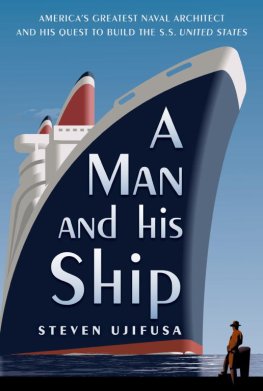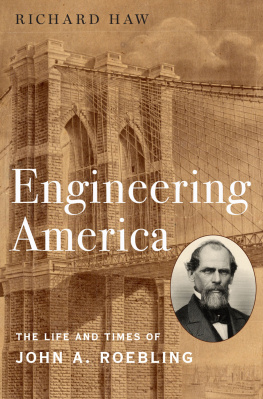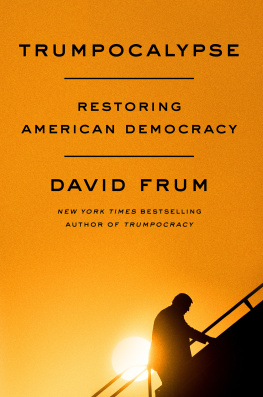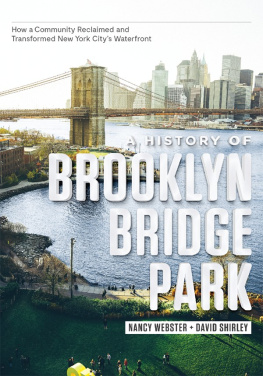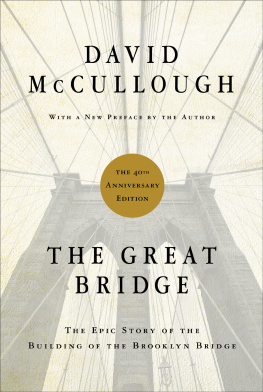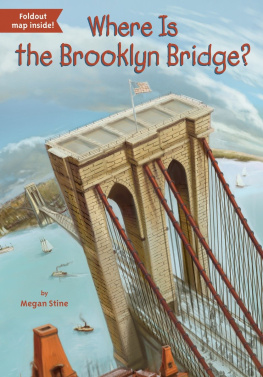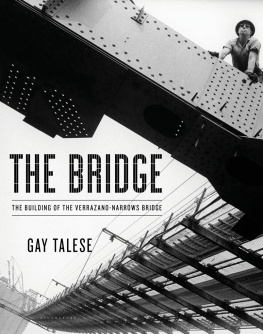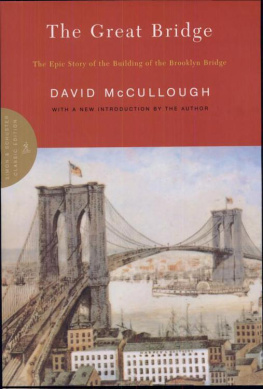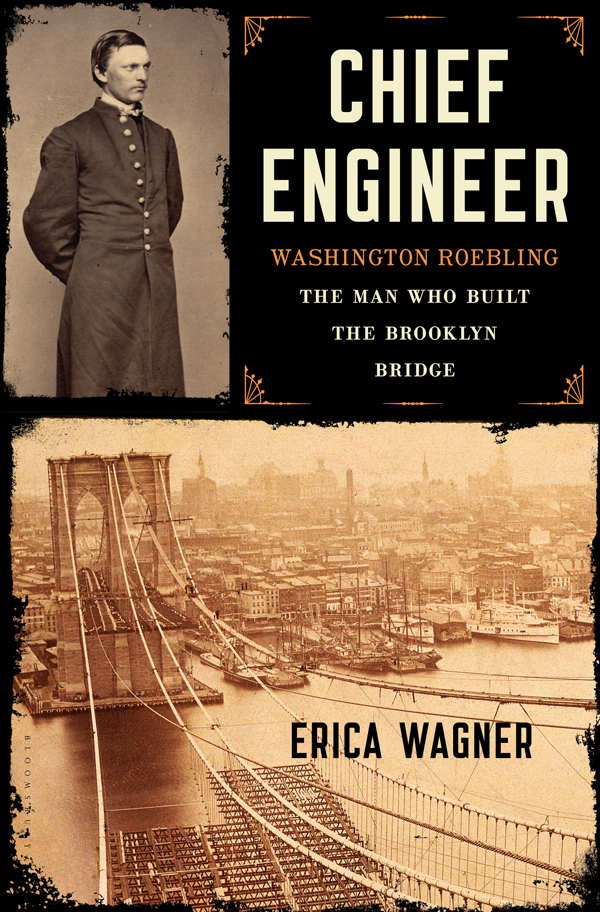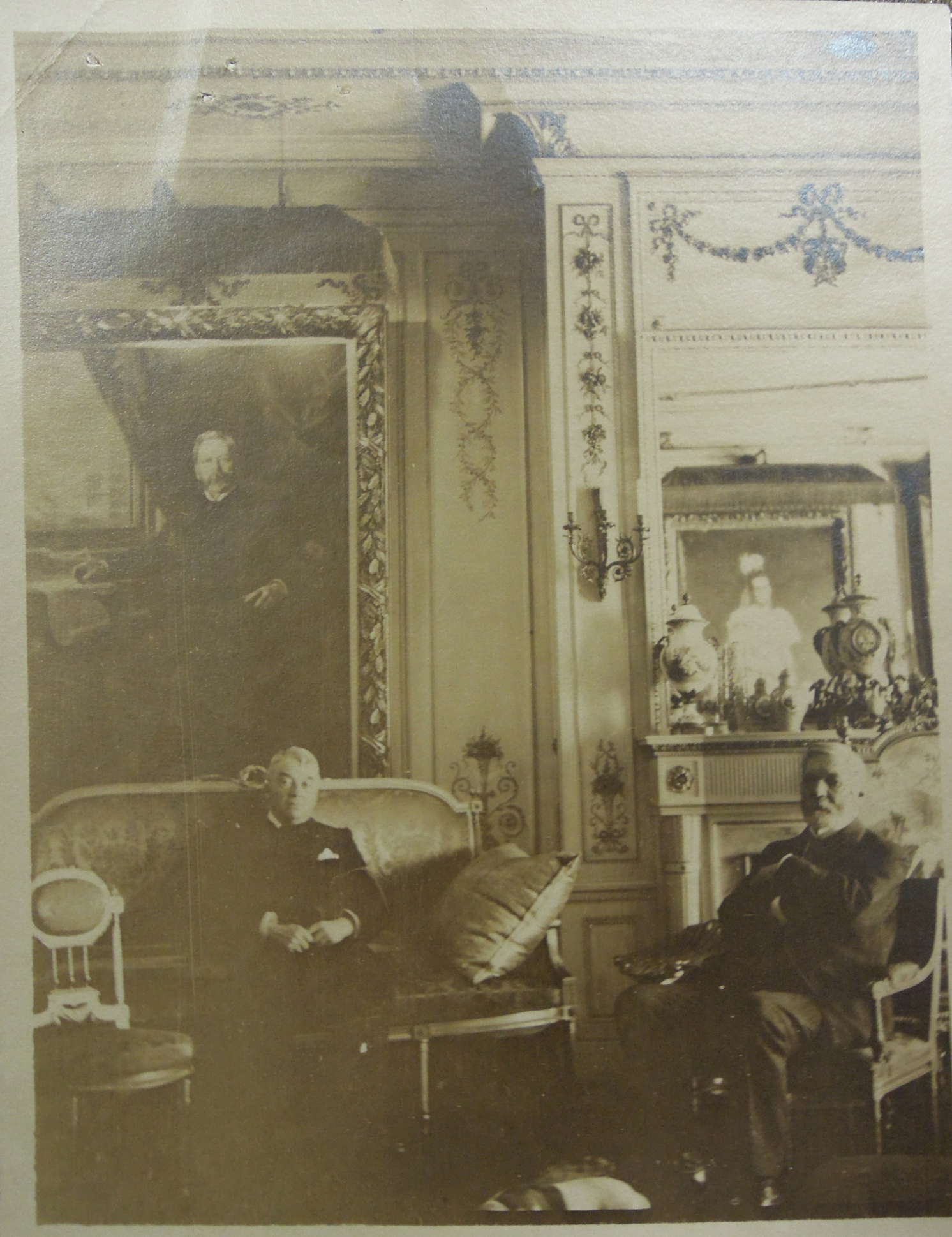Erica Wagner - Chief Engineer: Washington Roebling, the Man Who Built the Brooklyn Bridge
Here you can read online Erica Wagner - Chief Engineer: Washington Roebling, the Man Who Built the Brooklyn Bridge full text of the book (entire story) in english for free. Download pdf and epub, get meaning, cover and reviews about this ebook. year: 2017, publisher: Bloomsbury USA, genre: Non-fiction. Description of the work, (preface) as well as reviews are available. Best literature library LitArk.com created for fans of good reading and offers a wide selection of genres:
Romance novel
Science fiction
Adventure
Detective
Science
History
Home and family
Prose
Art
Politics
Computer
Non-fiction
Religion
Business
Children
Humor
Choose a favorite category and find really read worthwhile books. Enjoy immersion in the world of imagination, feel the emotions of the characters or learn something new for yourself, make an fascinating discovery.

- Book:Chief Engineer: Washington Roebling, the Man Who Built the Brooklyn Bridge
- Author:
- Publisher:Bloomsbury USA
- Genre:
- Year:2017
- Rating:5 / 5
- Favourites:Add to favourites
- Your mark:
Chief Engineer: Washington Roebling, the Man Who Built the Brooklyn Bridge: summary, description and annotation
We offer to read an annotation, description, summary or preface (depends on what the author of the book "Chief Engineer: Washington Roebling, the Man Who Built the Brooklyn Bridge" wrote himself). If you haven't found the necessary information about the book — write in the comments, we will try to find it.
I know that nothing can be done perfectly at the first trial; I also know that each day brings its little quota of experiences, which with honest intentions, will lead to perfection after a while. --Washington Roebling
His father conceived of the Brooklyn Bridge, but after John Roeblings sudden death, Washington Roebling built what has become one of Americans most iconic structures--as much a part of New York as the Statue of Liberty or the Empire State Building. Yet, as recognizable as the bridge is, its builder is too often forgotten--and his life is of interest far beyond his chosen field. It is the story of immigrants, of the frontier, of the greatest crisis in American history, and of the making of the modern world.
Forty years after the publication ofThe Great Bridge, David McCulloughs classic chronicle of how the East River was spanned, Erica Wagner has written a fascinating biography of one of Americas most distinguished engineers, a man whose long life was a model of courage in the face of extraordinary adversity.Chief Engineeris enriched by Roeblings own eloquent voice, unveiled in his recently-discovered memoir that was previously thought lost to history.
The memoir reveals that his father, John-a renowned engineer who made his life in America after humble beginnings in Germany-was a tyrannical presence in Washingtons life, so his own adoption of that career was hard won. A young man when the Civil War broke out, Washington joined the Union Army, building bridges that carried soldiers across rivers and seeing action in many pivotal battles, from Antietam to Gettysburg-aspects of his life never before fully brought to light. Safely returned, he married the remarkable Emily Warren Roebling, who would play a crucial role in the construction of the unprecedented Brooklyn Bridge. It would be Washington Roeblings grandest achievement-but by no means the only one.
Elegantly written with a compelling narrative sweep,Chief Engineerwill introduce Washington Roebling and his era to a new generation of readers.
Erica Wagner: author's other books
Who wrote Chief Engineer: Washington Roebling, the Man Who Built the Brooklyn Bridge? Find out the surname, the name of the author of the book and a list of all author's works by series.

